Scalable Emulation of Heterogeneous Systems
Emilio G. Cota
PhD Dissertation Defense
March 14, 2019
Columbia University
Moore's Law
isn't dead
but might be slowing down
Data: CPUDB, Intel ARK, Wikipedia: https://en.wikipedia.org/wiki/Transistor_count
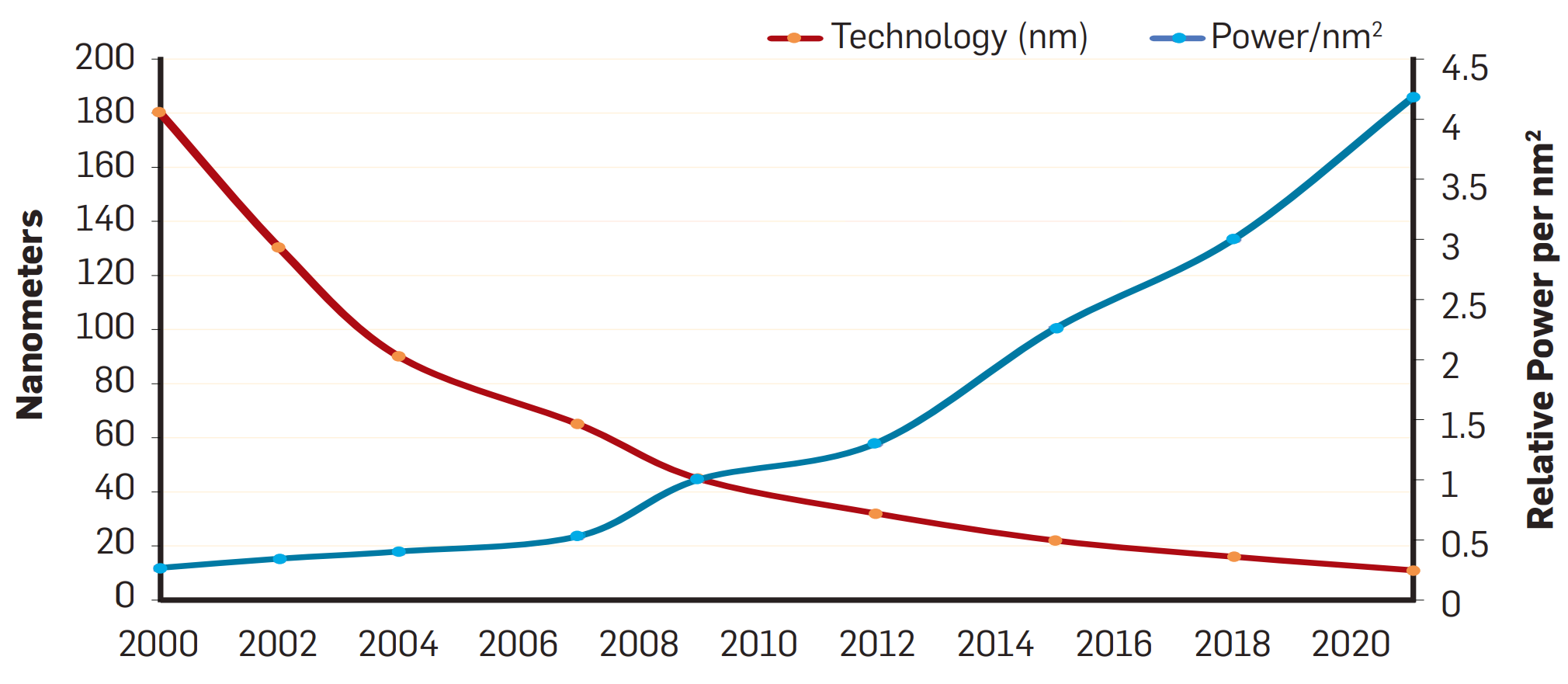
Plot from 2018 Turing Lecture by Hennessy & Patterson
Data based on models in Esmaeilzadeh et al., "Dark Silicon and the End of Multicore Scaling", ISCA'11
Dennard Scaling is dead
power density increasing since the mid-00's
End of Dennard scaling
~50% improv./year
<=10%/year
DVFS
..but multicores can only take us so far due to Amdahl's law:
and even if p == 1, multicore scaling will stop due to growing power density:
growing portions of chips will have to remain powered off (a.k.a. "dark silicon")
"The Multicore Scaling Era"
Post-Dennard Scaling Era
Accelerators
Give up generality for greater efficiency
embrace dark silicon: add many accelerators; not all will be on at the same time
Energy efficiency is the key metric
Who can afford non-generality?
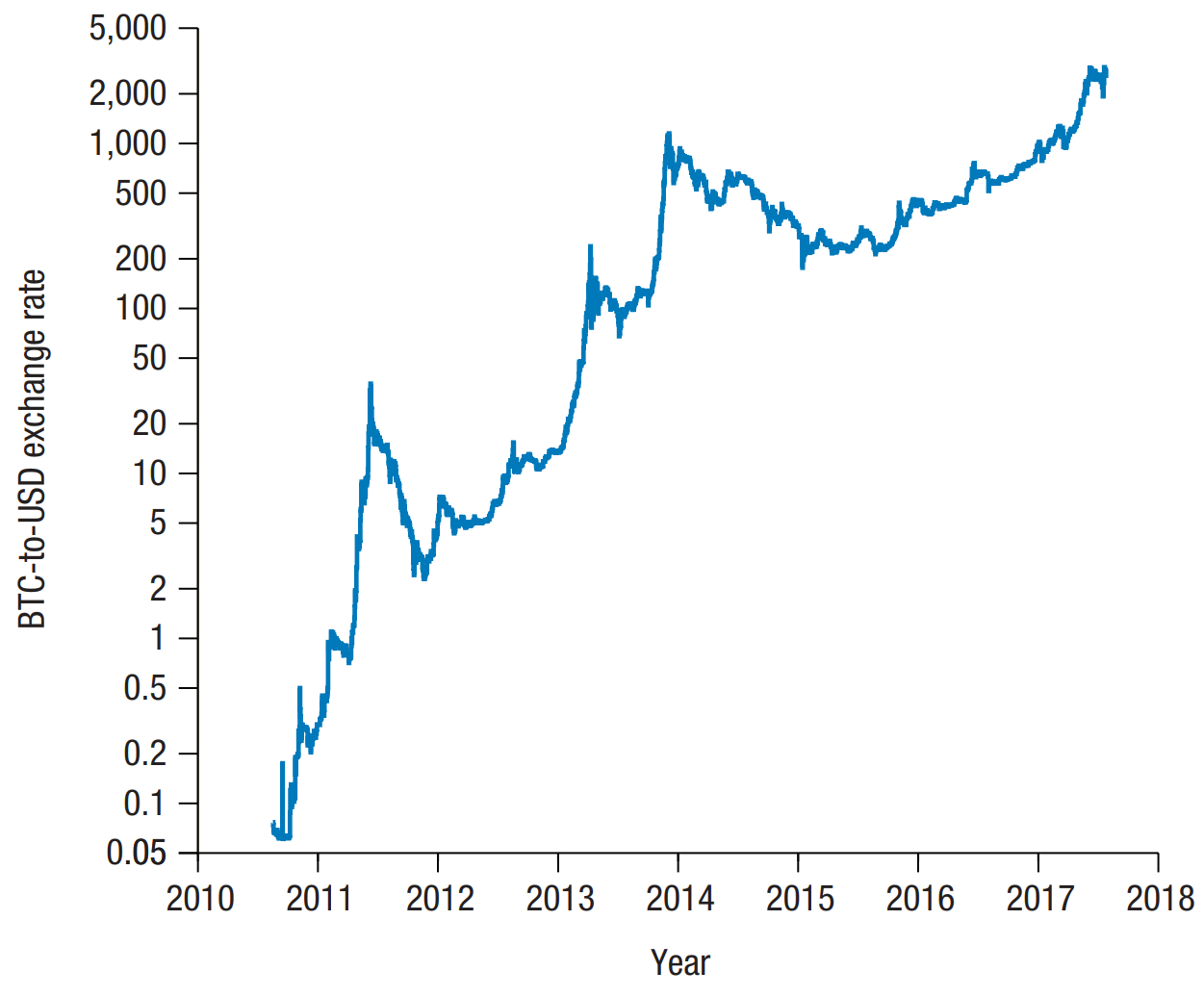
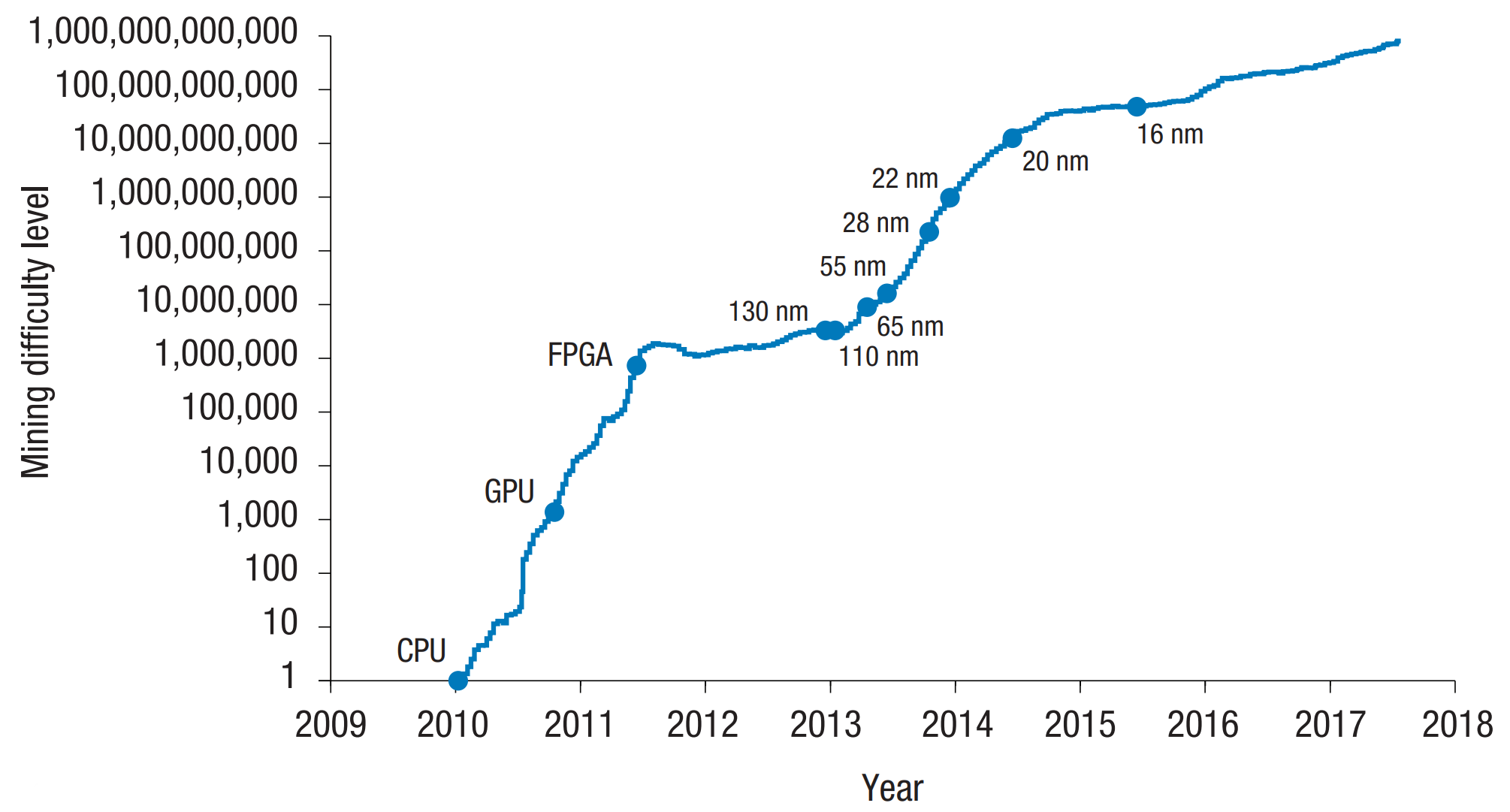
Accelerators are expensive to develop and deploy, particularly ASICs
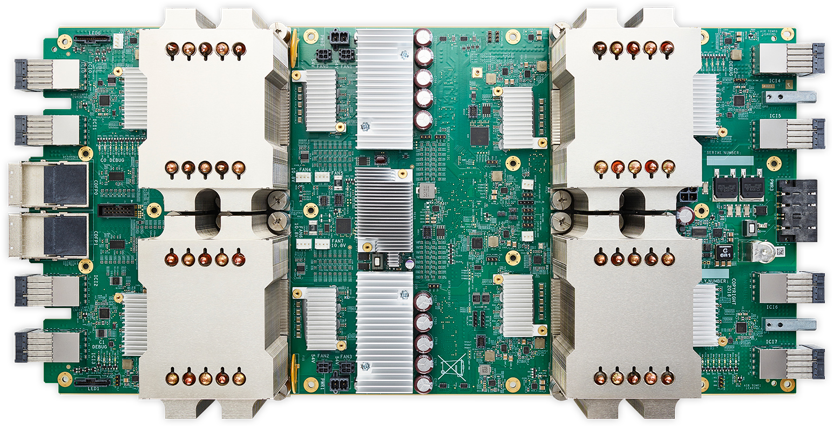
Example: Bitcoin accelerators
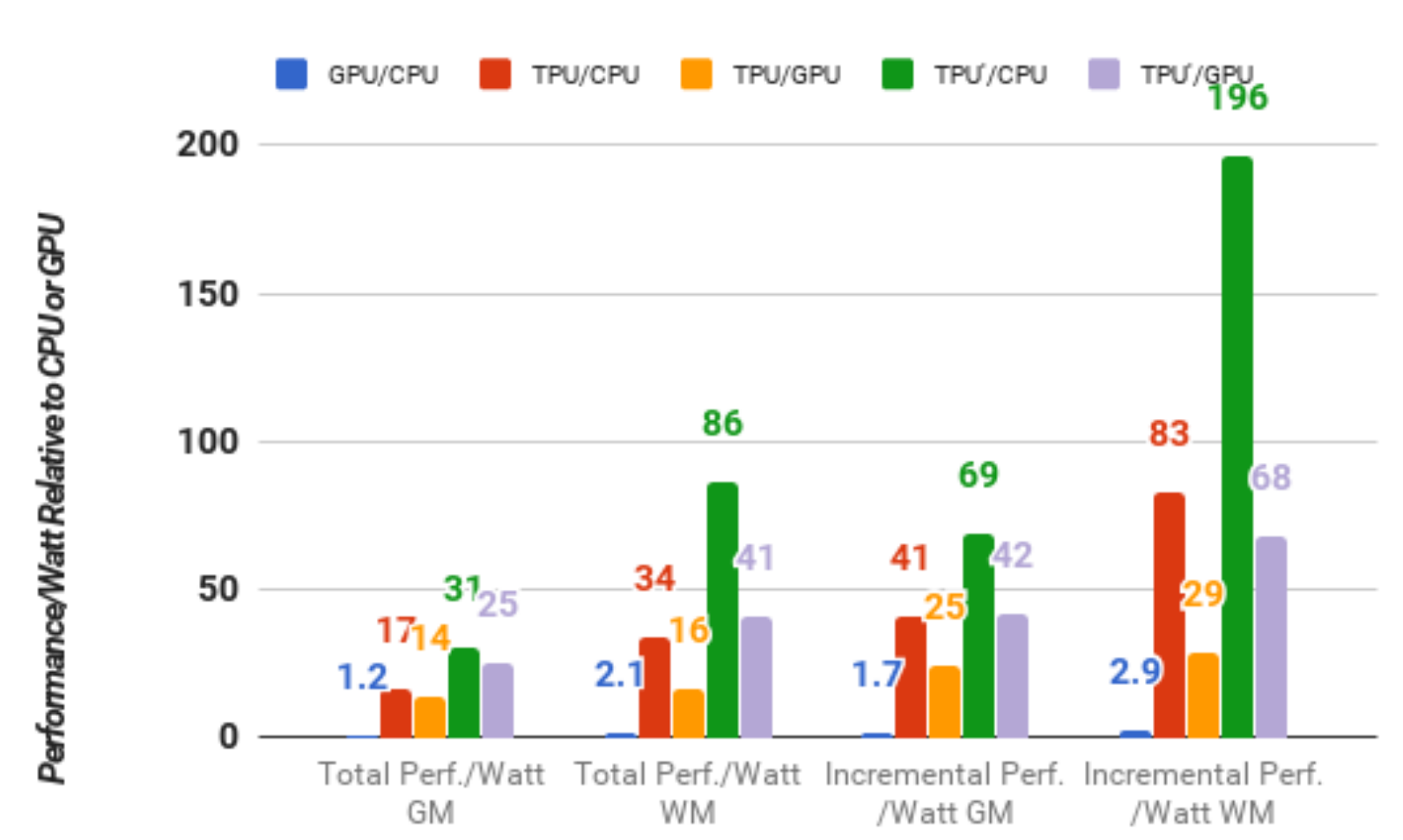
Example: TPU for neural networks
Investment can only be amortized for high-demand application domains
Taylor, "The Evolution of Bitcoin Hardware", IEEE Computer 2017
Jouppi et al., "In-Datacenter Performance Analysis of a Tensor Processing Unit", ISCA'17
Today's systems are increasingly
Heterogeneous
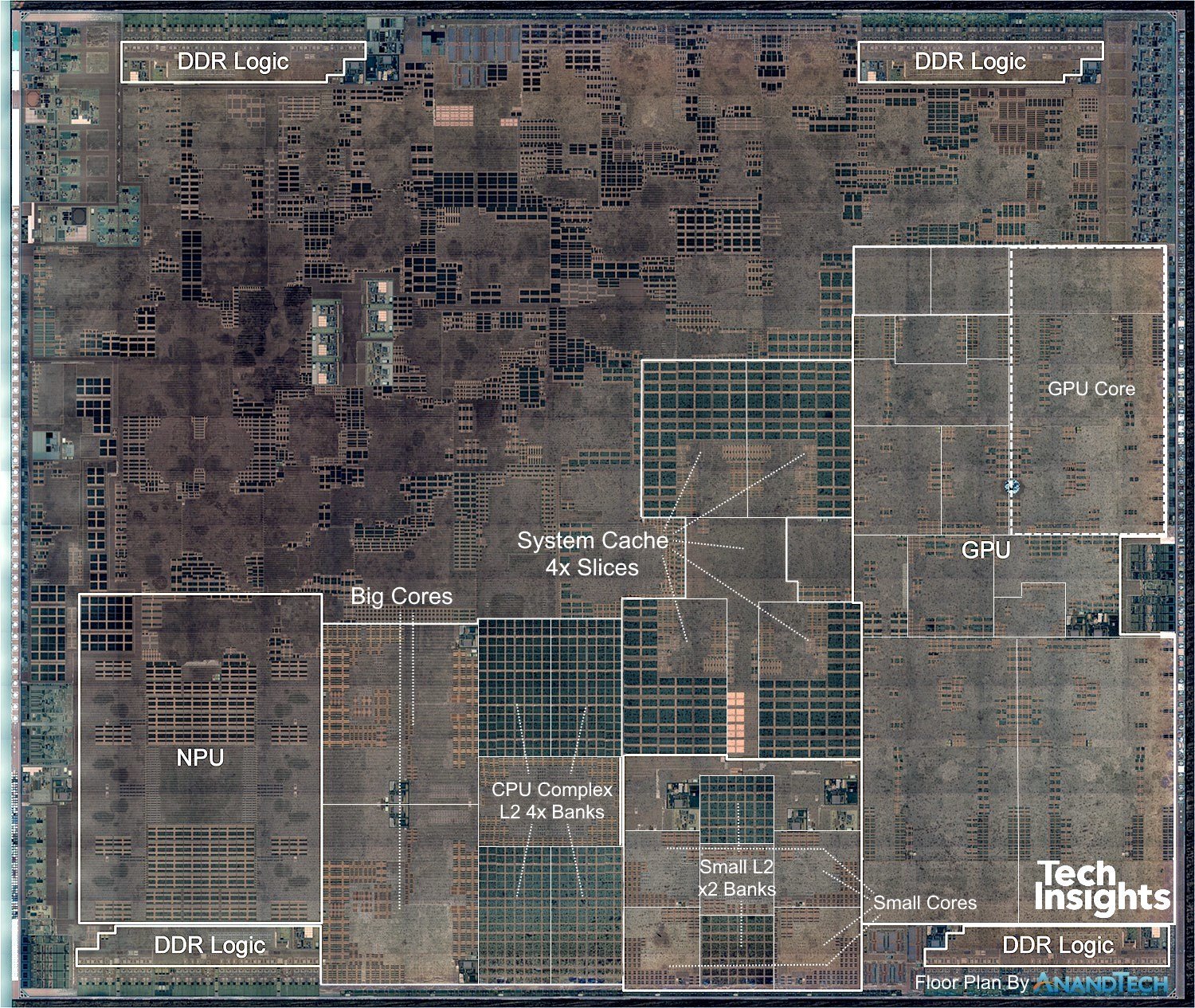
Heterogeneous systems integrate general-purpose cores with accelerators
With further transistor scaling, increasing portions of the chip will be devoted to accelerators
Example: Apple A12 7nm SoC ("Iphone X/XS")
Sources: techinsights.com "Apple iPhone XS Max Teardown", anandtech.com
Heterogeneous Systems'
Challenges
Accelerator design
System-level evaluation
High-level synthesis tools enable productive design space exploration
Simulators for heterogeneous systems are limited by a lack of fast, scalable emulators
Accelerator Integration
Unused accelerators incur a large opportunity cost
Heterogeneous systems'
Emulation Requirements
Accelerator modeling
Portable, cross-ISA
From RTL and/or high-level synthesis descriptions
Accelerators might require ISA innovations
Full-system
Accelerators might affect the hardware-software interface, e.g. virtual memory or I/O
Performance
Leverage multi-core hosts while maintaining correctness
Architecture
OS
Compiler
Thesis
"Fast, scalable machine emulation is feasible and useful for evaluating the design and integration of heterogeneous systems"
Contributions
Cross-ISA Emulation
- Design of a scalable, full-system, cross-ISA emulator
- Handling of guest-host ISA differences in atomic instructions
Accelerator Integration
-
Quantitative comparison of accelerator couplings
-
Technique to lower the opportunity cost of accelerator integration by reusing acc. memories to extend the LLC
- Fast, correct cross-ISA FP emulation leveraging the host FPU
- Fast, cross-ISA instrumentation layer
- Scalable emulation also during heavy code generation
Pico
[CGO'17]
Qelt
[VEE'19]
[DAC'15]
ROCA
[CAL'14, ICS'16]
Pico: Cross-ISA Machine Emulation
Cota, Bonzini, Bennée, Carloni. "Cross-ISA Machine Emulation for Multicores", CGO, 2017
goal: efficient, correct, multicore-on-multicore cross-ISA emulation
1-Minute Emulation Tutorial
Main task:
Fetch -> Decode -> Execute
How? Two options:
uint8_t *ip;
uint8_t opcode;
while (true)
// Read the next token from the instruction stream
opcode = *ip;
// Advance to the next byte in the stream
ip++;
// Decide what to do
switch (opcode) {
case PZT_ADD_32:
...
break;
case PZT_SUB_32:
...
break;
...
}
}1. Interpretation
2. Dynamic Binary Translation (DBT)
Faster than interpretation
More complex
e.g., external "helpers" are needed to deal with complex emulation
"DBT dispatch loop"
Pico makes QEMU* a scalable emulator
Open source: https://www.qemu.org
Widely used in both industry and academia
Supports many ISAs through DBT via TCG, its Intermediate Representation (IR):
Our contributions are not QEMU-specific
They are applicable to dynamic binary translators at large
[*] Bellard. "QEMU, a fast and portable dynamic translator", ATC, 2005
Challenges in scalable cross-ISA emulation
(1) Scalability of the DBT engine
(2) ISA disparities between guest & host:
[A] J. H. Ding et al. PQEMU: A parallel system emulator based on QEMU. ICPADS, 2011
[B] Z. Wang et al. COREMU: A scalable and portable parallel full-system emulator. PPoPP, 2011
[C] D. Lustig et al. ArMOR: defending against memory consistency model mismatches in heterogeneous architectures. ISCA, 2015
(2.1) Memory consistency mismatches
(2.2) Atomic instruction semantics
i.e. compare-and-swap vs. load locked-store conditional
Related Work:
-
PQEMU [A] and COREMU [B] do not address (2)
-
ArMOR [C] solves (2.1)
Pico's contributions: (1) & (2.2)
Pico's Architecture
- One host thread per guest CPU
- Instead of emulating guest CPUs one at a time
- Key data structure: translation block cache
Translation Block (TB) Cache
- Buffers TBs to amortize translation cost
- Shared by all vCPUs to minimize code duplication
- see [*] for a private vs. shared cache comparison
To scale for most workloads, we need concurrent code execution
[*] Bruening, Kiriansky, Garnett, Banerji. "Thread-shared software code caches", CGO, 2006
QEMU's Translation Block Cache
-
Long hash chains: slow lookups
-
Fixed number of buckets
-
hash=h(phys_addr) leads to uneven chain lengths
-
-
No support for concurrent lookups
Problems in QEMU's TB hash table
-
hash=h(phys_addr, phys_PC, cpu_flags): uniform chain distribution
-
e.g. longest chain down from 550 to 40 TBs when booting ARM Linux
-
-
QHT: A resizable, scalable hash table
-
scales for both reads & writes
-
-
Keeps QEMU's global lock for code translation
-
Translation is rare, but more on this later!
-
Pico's Translation Block Cache
Parallel Performance (x86-on-x86)
- Speedup normalized over native's single-threaded perf
- Dashed: Ideal scaling
- QEMU-user not shown: does not scale at all
- Pico scales better than Native
- PARSEC known not to scale to many cores*
- DBT slowdown delays scalability collapse
- Similar trends for server workloads
[*] Southern, Renau. "Deconstructing PARSEC scalability", WDDD, 2015
Atomic Operations
Two families:
/* runs as a single atomic instruction */
bool CAS(type *ptr, type old, type new) {
if (*ptr != old) {
return false;
}
ptr = new;
return true;
}Compare-and-Swap (CAS)
Load Locked-Store Conditional (LL/SC)
/*
* store_exclusive() returns 1 if addr has
* been written to since load_exclusive()
*/
do {
val = load_exclusive(addr);
val += 1; /* do something */
} while (store_exclusive(addr, val);
ldl_l/stl_c lwarx/stwcx ldrex/strex ldaxr/strlxr ll/sc lr/sc
Challenge: How to correctly emulate atomics in a parallel environment, without hurting scalability?
Alpha:
POWER:
ARM:
aarch64:
MIPS:
RISC-V:
x86/IA-64:
cmpxchg
CAS on CAS host: Trivial
CAS on LL/SC: Trivial
LL/SC on LL/SC: Not trivial
Only a few simple instructions are allowed between LL and SC
LL/SC on CAS: Not trivial
Solving this solves LL/SC on LL/SC, because LL/SC is stronger than CAS
However, there's the ABA problem
Challenge: How to correctly emulate atomics in a parallel environment, without hurting scalability?
ABA Problem
| cpu0 | cpu1 |
|---|---|
| do { val = atomic_read(addr); /* reads A */ ... ... } while (CAS(addr, val, newval); |
atomic_set(addr, B); atomic_set(addr, A); |
time
| cpu0 | cpu1 |
|---|---|
| do { val = load_exclusive(addr); /* reads A */ ... ... } while (store_exclusive(addr, newval); |
atomic_set(addr, B); atomic_set(addr, A); |
Init: *addr = A;
SC fails, regardless of the contents of *addr
CAS succeeds where SC failed!
time
Pico's Emulation of Atomics
3 proposed options that scale:
1. Pico-CAS: pretend ABA isn't an issue
- Scalable & fast, yet incorrect due to ABA!
- However, portable code relies on CAS only, not on LL/SC (e.g. Linux kernel, gcc atomics)
- However, portable code relies on CAS only, not on LL/SC (e.g. Linux kernel, gcc atomics)
2. Pico-ST: "store tracking"
- Correct, scalable & portable
- Perf penalty due to instrumenting regular stores
3. Pico-HTM: Leverages hardware transactional memory (HTM) extensions
- Correct & scalable
-
No need to instrument regular stores
-
But requires HTM support on the host
-
Atomic emulation perf
Pico-user atomic_add, multi-threaded, aarch64-on-POWER
Trade-off: correctness vs. scalability vs. portability
- All Pico options scale as contention is reduced
- QEMU cannot scale: it stops all other CPUs on every atomic
- Pico-CAS is the fastest, yet is not correct
- Pico-HTM performs well, but requires hardware support
- Pico-ST scales, but it is slowed down by store instrumentation
- HTM noise: probably due to optimized same-core SMT transactions
Qelt: Cross-ISA Machine Instrumentation
Cota, Carloni. "Cross-ISA Machine Instrumentation using Fast and Scalable Dynamic Binary Translation", VEE, 2019
goal: fast, scalable instrumentation of a machine emulator
How fast?
- Goal: match Pin's speed when using it for simulation
- Note that Pin is same-ISA, user-only
Recall our motivation:
Fast, cross-ISA, full-system instrumentation
How to get there? Need to:
-
Increase emulation speed
- Pico is slower than Pin, particularly for full-system and FP workloads
- Pico does not scale for workloads that translate a lot of code in parallel, e.g. parallel compilation
- Support cross-ISA instrumentation of the guest
Qelt's contributions
Emulation Speed
-
Correct cross-ISA FP emulation using the host FPU
-
Integration of two state-of-the-art optimizations:
-
indirect branch handling
-
dynamic sizing of the software TLB
-
-
Make the DBT engine scale under heavy code translation
-
Not just during execution, like Pico
-
Instrumentation
4. Fast, ISA-agnostic instrumentation layer for QEMU
1. Cross-ISA FP Emulation
- Rounding, NaN propagation, exceptions, etc. have to be emulated correctly
- Reading the host FPU flags is very expensive
- soft-float is faster, which is why QEMU uses it
- Qelt uses the host FPU for a subset of FP operations, without ever reading the host FPU flags
- Fortunately, this subset is very common
- defers to soft-float otherwise
baseline (incorrect): always uses the host FPU and never reads excp. flags
1. Cross-ISA FP Emulation
Common case:
- A, B are normal or zero
- Inexact already set
- Default rounding
How common?
99.18%
of FP instructions in SPECfp06
float64 float64_mul(float64 a, float64 b, fp_status *st)
{
float64_input_flush2(&a, &b, st);
if (likely(float64_is_zero_or_normal(a) &&
float64_is_zero_or_normal(b) &&
st->exception_flags & FP_INEXACT &&
st->round_mode == FP_ROUND_NEAREST_EVEN)) {
if (float64_is_zero(a) || float64_is_zero(b)) {
bool neg = float64_is_neg(a) ^ float64_is_neg(b);
return float64_set_sign(float64_zero, neg);
} else {
double ha = float64_to_double(a);
double hb = float64_to_double(b);
double hr = ha * hb;
if (unlikely(isinf(hr))) {
st->float_exception_flags |= float_flag_overflow;
} else if (unlikely(fabs(hr) <= DBL_MIN)) {
goto soft_fp;
}
return double_to_float64(hr);
}
}
soft_fp:
return soft_float64_mul(a, b, st);
}
.. and similarly for 32/64b + , - , \(\times\) , \(\div\), \( \surd\), ==
2. Other Optimizations
derived from state-of-the-art DBT engines
B. TLB Emulation (full-system)
- Virtual memory is emulated with a software TLB
- Guest memory accesses first check a TLB array on the host
- Tong et al. [B] present TLB resizing based on TLB use rate at flush time
- We improve on it by incorporating history to shrink less aggressively
- Rationale: if a memory-hungry process was just scheduled out, it is likely that it will be scheduled in in the near future
- We improve on it by incorporating history to shrink less aggressively
A. Indirect branch handling
- We implement Hong et al.'s [A] technique to speed up indirect branches
- We add a new TCG operation so that all ISA targets can benefit
[A] Hong, Hsu, Chou, Hsu, Liu, Wu. "Optimizing Control Transfer and Memory Virtualization in Full System Emulators", ACM TACO, 2015
[B] Tong, Koju, Kawahito, Moshovos. "Optimizing memory translation emulation in full system emulators", ACM TACO, 2015
Ind. branch + FP improv.
user-mode x86_64-on-x86_64. Baseline: Pico (i.e. QEMU v3.1.0)
TLB resizing
full-system x86_64-on-x86_64. Baseline: Pico (i.e. QEMU v3.1.0)
- +TLB history: takes into account recent usage of the TLB to shrink less aggressively, improving performance
3. Parallel code translation
with a shared translation block (TB) cache
Monolithic TB cache (Pico)
Partitioned TB cache (Qelt)
Parallel TB execution (green blocks)
Serialized TB generation (red blocks) with a global lock
Parallel TB execution
Parallel TB generation (one region per vCPU)
- vCPUs generate code at different rates
- Appropriate region sizing ensures low code cache waste
Parallel code translation
Guest VM performing parallel compilation of Linux kernel modules, x86_64-on-x86_64
- Pico does not scale for this workload due to contention on the lock serializing code generation
- +parallel generation removes the scalability bottleneck
- Scalability is similar (or better) to KVM's
4. Cross-ISA Instrumentation
QEMU/Pico cannot instrument the guest
- Would like plugin code to receive callbacks on instruction-grained events
- e.g. memory accesses performed by a particular instruction in a translated block (TB), as in Pin
4. Cross-ISA Instrumentation
Instrumentation with Qelt
- Qelt first adds "empty" instrumentation in TCG, QEMU's IR
- Plugins subscribe to events in a TB
- They can use a decoder; Qelt only sees opaque insns/accesses
- Qelt then substitutes "empty" instrumentation with the actual calls to plugin callbacks (or removes it if not needed)
- Other features: inlining, helper instr., accelerator support (DMA, interrupts, I/O)...
Full-system instrumentation
x86_64-on-x86_64 (lower is better). Baseline: KVM
Qelt faster than the state-of-the-art, even for heavy instrumentation (cachesim)
User-mode instrumentation
x86_64-on-x86_64 (lower is better). Baseline: native
- Qelt has narrowed the gap with Pin/DRIO for no instr., although for FP the gap is still significant
- DRIO is not designed for non-inline instr.
- Qelt is competitive with Pin for heavy instrumentation (cachesim), while being cross-ISA
Thesis
"Fast, scalable machine emulation is feasible and useful for evaluating the design and integration of heterogeneous systems"
Contributions
Cross-ISA Emulation
- Design of a scalable, full-system, cross-ISA emulator
- Handling of guest-host ISA differences in atomic instructions
Accelerator Integration
-
Quantitative comparison of accelerator couplings
-
Technique to lower the opportunity cost of accelerator integration by reusing acc. memories to extend the LLC
- Fast, correct cross-ISA FP emulation leveraging the host FPU
- Fast, cross-ISA instrumentation layer
- Scalable emulation also during heavy code generation
Pico
[CGO'17]
Qelt
[VEE'19]
[DAC'15]
ROCA
[CAL'14, ICS'16]
Accelerator Coupling in
Heterogeneous Architectures
Cota, Mantovani, Di Guglielmo, Carloni. "An Analysis of Accelerator Coupling in Heterogeneous Architectures", DAC, 2015
goal: to draw observations about
performance, efficiency and programmability
of accelerators with different couplings
✔Nil invocation overhead (via ISA extensions)
✔ No internal storage: direct access to L1 cache
✗ Limited portability: design heavily tied to CPU
✔Good design reuse: no CPU-specific knowledge
✗ High set-up costs: driver invocation and DMA
✔ Freedom to tailor private memories (PLMs), e.g.
providing different banks, ports, and bit widths
✗ PLMs require large area expenses
Tightly-Coupled Accelerators
TCA
Loosely-Coupled Accelerators
LCA, two flavors: DRAM-DMA, LLC-DMA
vs.
- Applications: Seven high-throughput kernels from the PERFECT Benchmark Suite[*]
- Used High-Level Synthesis for productivity
[*] http://hpc.pnl.gov/PERFECT/
Cargo: Heterogeneous System Simulation
- Full-system running Linux
- Detailed event-driven L1 and L2 cache models + DRAMSim2 for DRAM
- LCAs: Unmodified SystemC/RTL/Chisel/C/C++ accelerators are simulated in parallel with the CPU simulation, synchronizing every n cycles (e.g. 100)
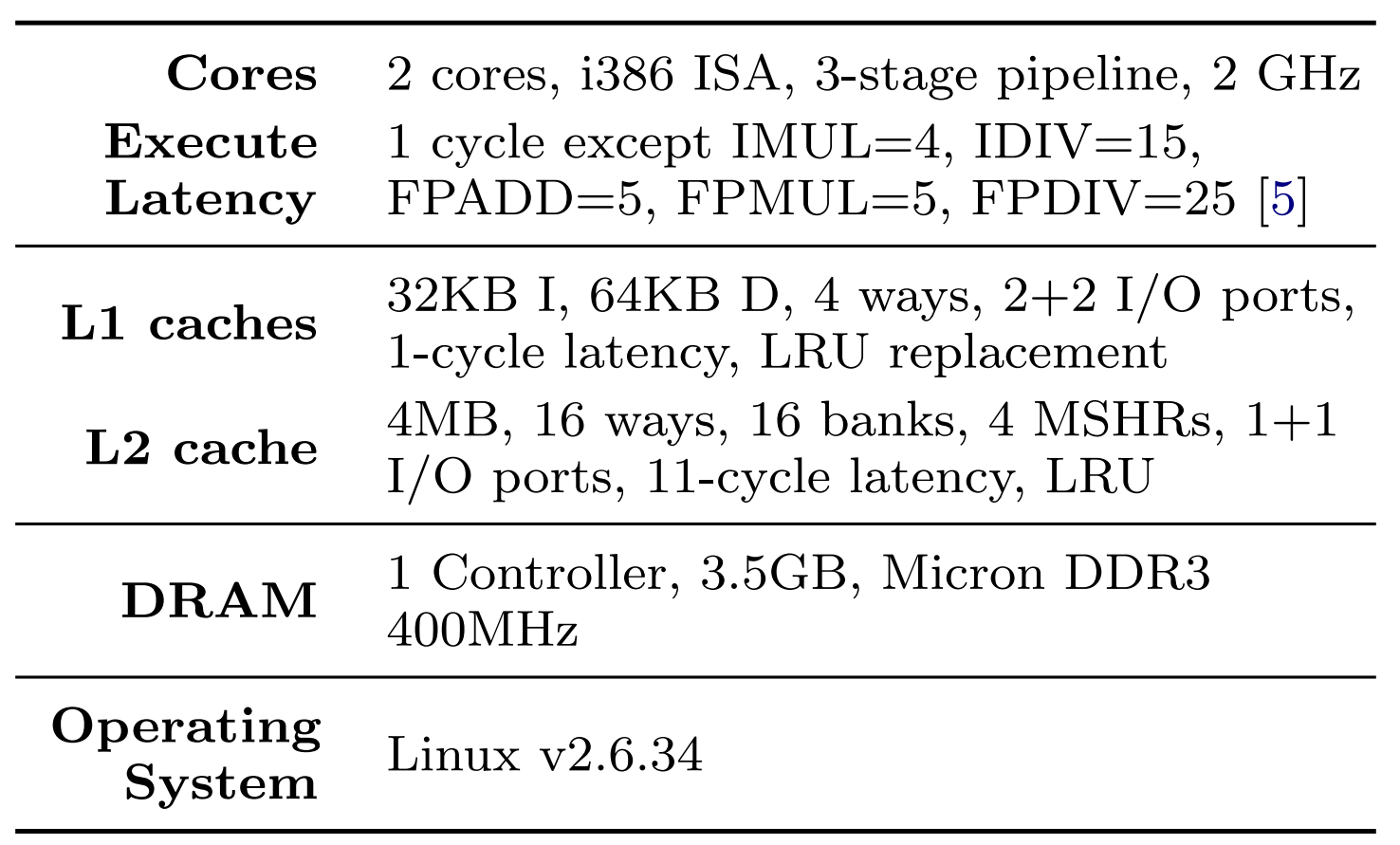
Accelerators
CPU & memory
Results
Perf. & Efficiency
-
LCAs best positioned to deliver high throughput given inputs of non-trivial size
- Efficiency gap between LCAs due to difference in off-chip accesses
- LCAs can saturate DRAM bandwidth, e.g. sort:
Why LCAs > TCAs:
Tailored, many-ported PLMs are key to performance
- L1s cannot provide this parallelism (at most 2 ports!)
ROCA: Reducing the Opportunity Cost of Accelerator Integration
Cota, Mantovani, Petracca, Casu, Carloni. "Accelerator Memory Reuse in the Dark Silicon Era", Computer Architecture Letters (CAL), 2014
Cota, Mantovani, Carloni. "Exploiting Private Local Memories to Reduce the Opportunity Cost of Accelerator Integration", Intl. Conf. on Supercomputing (ICS), 2016
goal: to expose on-chip accelerator PLMs to the LLC, thereby extracting utility from accelerators when otherwise unused
Accelerators' Opportunity Cost
An accelerator is only of utility if it applies to the system's workload
If it doesn't, more generally-applicable alternatives are more productive
vs.
vs.
vs.
Observation #1: Accelerators are mostly memory
An average of 69% of accelerator area is consumed by memory
Lyons, Hempstead, Wei, Brooks. "The Accelerator Store", TACO, 2012
#2: Average accelerator memory utilization is low
Not all accelerators on a chip are likely to run at the same time
Accelerator examples: AES, JPEG encoder, FFT, USB, CAN, TFT controller, UMTS decoder..
ROCA's
Goal:
No changes to coherence protocol
Minimal modifications to accelerators
To extend the LLC with acc. PLMs when otherwise not in use
#3: Acc. PLMs provide a de facto NUCA substrate
Parallel Simulation with Cargo
Configurations:
- 2M S-NUCA baseline
- 8MB S-NUCA (not pictured)
- same-area 6M ROCA, assuming accelerators are 66% memory (below the typical 69%)
| cores | 16 cores, i386 ISA, in-order IPC=1 except on memory accesses, 1GHz |
| L1 caches | Split I/D 32KB, 4-way set-associative, 1-cycle latency, LRU |
| L2 caches | 8-cycle latency, LRU S-NUCA: 16ways, 8 banks ROCA: 12 ways |
| Coherence | MESI protocol, 64-byte blocks, standalone directory cache |
| DRAM | 1 controller, 200-cycle latency, 3.5GB physical |
| NoC | 5x5 or 7x7 mesh, 128b flits, 2-cycle router traversal, 1-cycle links, XY router |
| OS | Linux v2.6.34 |
Workloads:
- Multi-programmed SPEC06 runs, not amenable to acceleration
Assuming no accelerator activity,
-
6M ROCA can realize 70%/68% of the performance/energy efficiency benefits of a same-area 8M S-NUCA
- while retaining accelerators' potential orders-of-magnitude gains
-
Sensitivity studies sweeping accelerator activity over
- space (which accelerators are reclaimed)
- time (how frequently they are reclaimed)
-
Key result: Accelerators with idle windows >10ms are prime candidates for ROCA
- perf/eff. within 10/20% of that with 0% activity
Results
Conclusions
Contributions
Cross-ISA Emulation
-
[CGO'17, VEE'19] Fast, scalable, cross-ISA machine emulation and instrumentation
- Performance for simulator-like instrumentation is competitive with state-of-the-art same-ISA emulators such as Pin
Accelerator Integration
-
[DAC'15] Quantitative comparison of accelerator couplings
-
[CAL'14, ICS'16] ROCA: Lower the opportunity cost of accelerator integration by reusing acc. memories to extend the LLC
[CAL'14] Cota, Mantovani, Petracca, Casu, Carloni. "Accelerator Memory Reuse in the Dark Silicon Era", Computer Architecture Letters (CAL), 2014 [DAC'15] Cota, Mantovani, Di Guglielmo, Carloni. "An Analysis of Accelerator Coupling in Heterogeneous Architectures", DAC, 2015 [ICS'16] Cota, Mantovani, Carloni. "Exploiting Private Local Memories to Reduce the Opportunity Cost of Accelerator Integration", Intl. Conf. on Supercomputing (ICS), 2016 [CGO'17] Cota, Bonzini, Bennée, Carloni. "Cross-ISA Machine Emulation for Multicores", CGO, 2017 [VEE'19] Cota, Carloni. "Cross-ISA Machine Instrumentation using Fast and Scalable Dynamic Binary Translation", VEE, 2019
Future Impact
-
We hope other researchers and educators will adopt QEMU to drive simulators of heterogeneous systems
- Cargo is a good example
-
Orders of magnitude faster than existing tools such as gem5-aladdin (~200 KIPS vs. ~10s of MIPS)
-
Has been used for both research and teaching at Columbia
-
-
Instrumentation layer: under review by the QEMU community
-
Everything else: merged upstream QEMU v2.7 (Sept'16)\( \leftrightarrow \)QEMU v4.0 (April'19)
-
Code contributions well-received (and improved!) by the QEMU community
-
302 commits to date
-
Pico + Qelt in QEMU
Backup slides
[1] http://concurrencykit.org
[12] D. Bruening, V. Kiriansky, T. Garnett, and S. Banerji. Thread-shared software code caches. CGO, pages 28–38, 2006
[13] T. David, R. Guerraoui, and V. Trigonakis. Asynchronized concurrency: The secret to scaling concurrent search data structures. ASPLOS, p. 631–644, 2015
Fast, concurrent lookups
Low update rate: max 6% booting Linux
Candidate #1: ck_hs [1] (similar to [12])
Candidate #2: CLHT [13]
#3: Our proposal: QHT
- Lock-free lookups, but no restrictions on the mem allocator
- Per-bucket sequential locks; retries very unlikely
Hash table Requirements
{
QEMU emulation modes
- DBT of user-space code only
- System calls are run natively on the host machine
- QEMU executes all translated code under a global lock
- Forces serialization to safely emulate multi-threaded code
- Emulates an entire machine
- Including guest OS and system devices
- QEMU uses a single thread to emulate guest CPUs using DBT
- No need for a global lock since no races are possible
User-mode (QEMU-user)
System-mode (QEMU-system)
Single-threaded perf (x86-on-x86)
- Pico-user is 20-90% faster than QEMU-user due to lockless TB lookups
- Pico-system's perf is virtually identical to QEMU-system's
Pico-ST: Store Tracking
- Each address accessed atomically gets an entry of CPU set + lock
- LL/SC emulation code operates on the CPU set atomically
- Keep entries in a HT indexed by address of atomic access
- Problem: regular stores must abort conflicting LL/SC pairs!
- Solution: instrument stores to check whether the address has ever been accessed atomically
- If so (rare), take the appropriate lock and clear the CPU set
- Optimization: Atomics << regular stores: filter HT accesses with a sparse bitmap
Pico-HTM: Leveraging HTM
- HTM available on recent POWER, s390 and x86_64 machines
- Wrap the emulation of code between LL/SC in a transaction
- Conflicting regular stores dealt with thanks to the strong atomicity property*: "A regular store forces all conflicting transactions to abort."
[*] Blundell, Lewis, Martin. "Subtleties of transactional memory atomicity semantics", Computer Architecture Letters, 2006
- Fallback: Emulate the LL/SC sequence with all other CPUs stopped
- Fun fact: no emulated SC ever reports failure!
Atomic emulation perf
Pico-user, single thread, aarch64-on-x86
- Pico-CAS & HTM: no overhead (but only HTM is correct)
- Pico-ST: Virtually all overhead comes from instrumenting stores
- Pico-ST-nobm: highlights the benefits of the bitmap
Atomic emulation perf
Pico-user atomic_add, multi-threaded, aarch64-on-POWER
atomic_add microbenchmark
- All threads perform atomic increments in a loop
- No false sharing: each count resides in a separate cache line
- Contention set by the n_elements parameter
- i.e. if n_elements = 1, all threads contend for the same line
- Scheduler policy: evenly scatter threads across cores
struct count {
u64 val;
} __aligned(64); /* avoid false sharing */
struct count *counts;
while (!test_stop) {
int index = rand() % n_elements;
atomic_increment(&counts[index].val);
}Linux boot
single thread
-
QHT & ck_hs resize to always achieve the best perf
- but ck_hs does not scale w/ ~6% update rates
Memory Consistency
x86-on-POWER
We applied ArMOR's [24] FSMs:
- SYNC: Insert a full barrier before every load or store
- PowerA: Separate loads with lwsync, pretending that POWER is multi-copy atomic
, and also leveraged
- SAO: Strong Access Ordering
[24] D. Lustig et al. ArMOR: defending against memory consistency model mismatches in heterogeneous architectures. ISCA, pages 388–400, 2015
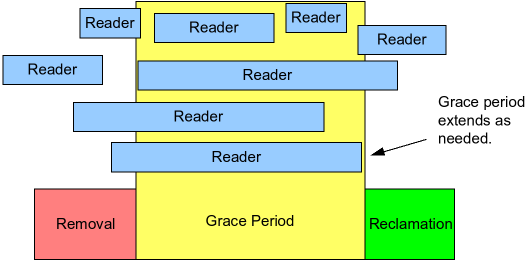
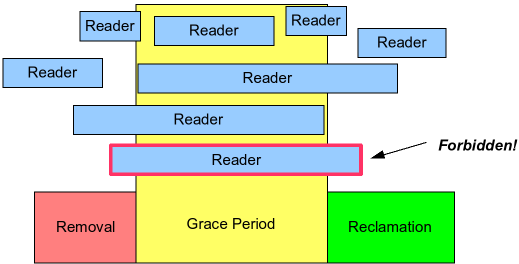
Read-Copy-Update (RCU)
RCU is a way of waiting for things to finish,
without tracking every one of them
Credit: Paul McKenney
Sequence Locks
void *qht_lookup__slowpath(struct qht_bucket *b, qht_lookup_func_t func,
const void *userp, uint32_t hash)
{
unsigned int version;
void *ret;
do {
version = seqlock_read_begin(&b->sequence);
ret = qht_do_lookup(b, func, userp, hash);
} while (seqlock_read_retry(&b->sequence, version));
return ret;
}
Reader
Writer
seq=0
seq=3
seq=1
seq=2
seq=3
Retry
Reader: Sequence number must be even, and must remain unaltered. Otherwise, retry
seq=3
seq=4
Retry
Retry
seq=4
seq=4
CLHT malloc requirement
val_t val = atomic_read(&bucket->val[i]);
smp_rmb();
if (atomic_read(&bucket->key [i]) == key && atomic_read(&bucket->val[i]) == val) {
/* found */
}the memory allocator of the values must guarantee that the same address cannot appear twice during the lifespan of an operation.
[13] T. David, R. Guerraoui, and V. Trigonakis. Asynchronized concurrency: The secret to scaling concurrent search data structures. ASPLOS, pages 631–644, 2015
Multi-copy Atomicity
iriw litmus test
| cpu0 | cpu1 | cpu2 | cpu3 |
|---|---|---|---|
| x=1 | y=1 | r1=x r2=y |
r3=y r4=x |
- Forbidden outcome: r1 = r3 = 1, r2 = r4 = 0
- The outcome is forbidden on x86
- It is observable on POWER unless the loads are separated by a sync instruction
[10] H.-J. Boehm and S. V. Adve. Foundations of the C++ concurrency memory model. ACM SIGPLAN Notices, volume 43, pages 68–78, 2008.
Evaluation
user-mode x86_64-on-x86_64. Baseline: Pico (i.e. QEMU v3.1.0)
FP per-op contribution
user-mode x86-on-x86
Qelt Instrumentation
- Fine-grained event subscription when guest code is translated
- e.g. subscription to memory reads in Pin vs Qelt:
VOID Instruction(INS ins)
{
if (INS_IsMemoryRead(ins))
INS_InsertCall(ins, IPOINT_BEFORE, (AFUNPTR)MemCB, ...);
}
VOID Trace(TRACE trace, VOID *v)
{
for (BBL bbl = TRACE_BblHead(trace); BBL_Valid(bbl); bbl = BBL_Next(bbl))
for (INS ins = BBL_InsHead(bbl); INS_Valid(ins); ins = INS_Next(ins))
Instruction(ins);
}
static void vcpu_tb_trans(qemu_plugin_id_t id, unsigned int cpu_index, struct qemu_plugin_tb *tb)
{
size_t n = qemu_plugin_tb_n_insns(tb);
size_t i;
for (i = 0; i < n; i++) {
struct qemu_plugin_insn *insn = qemu_plugin_tb_get_insn(tb, i);
qemu_plugin_register_vcpu_mem_cb(insn, vcpu_mem, QEMU_PLUGIN_CB_NO_REGS, QEMU_PLUGIN_MEM_R);
}
Instrumentation overhead
user-mode, x86_64-on-x86_64
- Typical overhead
- Preemptive injection of instrumentation has negligible overhead
- Direct callbacks
- Better than going via a helper (that iterates over a list) due to higher cache locality
CactusADM an anomaly: TLB resizing doesn't kick in often enough (we only do it on TLB flushes)
SoftMMU overhead
lower is better
CactusADM an anomaly: TLB resizing doesn't kick in often enough (we only do it on TLB flushes)
SoftMMU using shadow page tables
Faravelon, Gruber, Pétrot. "Optimizing memory access performance using hardware assisted virtualization in retargetable dynamic binary translation. Euromicro Conference on Digital System Design (DSD), 2017.
[*] Belay, Bittau, Mashtizadeh, Terei, Mazieres, Kozyrakis. "Dune: Safe user-level access to privileged cpu features." OSDI, 2012
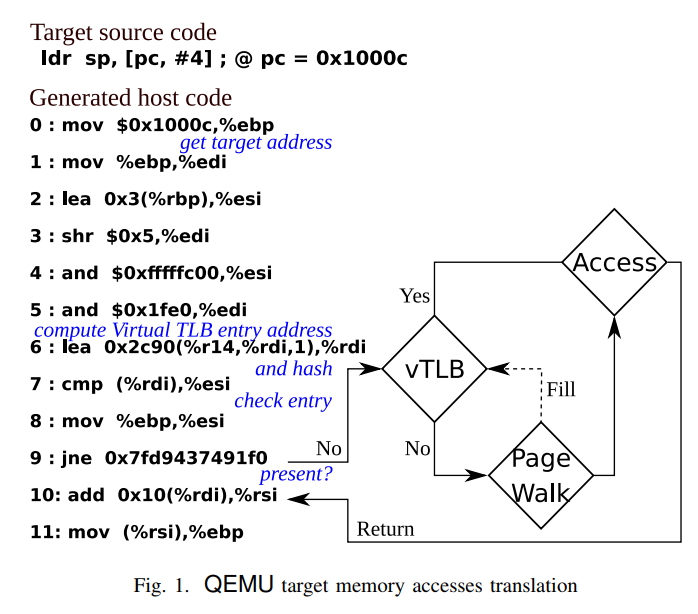
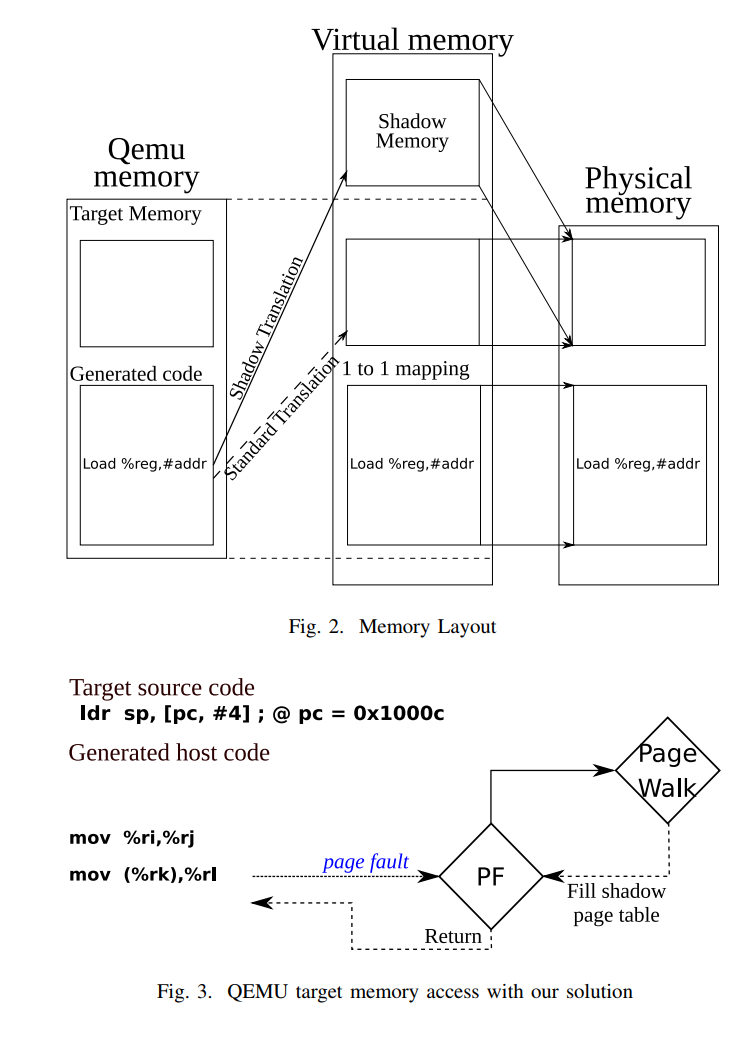
Before:
softMMU requires
many insns
after:
only 2 insns thanks to
shadow page tables
Advantages:
- High performance (almost 0 overhead for MMU emulation)
- Minimal modifications to QEMU compared to other options in the literature
Disadvantages:
- Requires dune*, which means QEMU must be statically compiled
- Cannot work when target address space => host address space
cross-ISA examples (1)
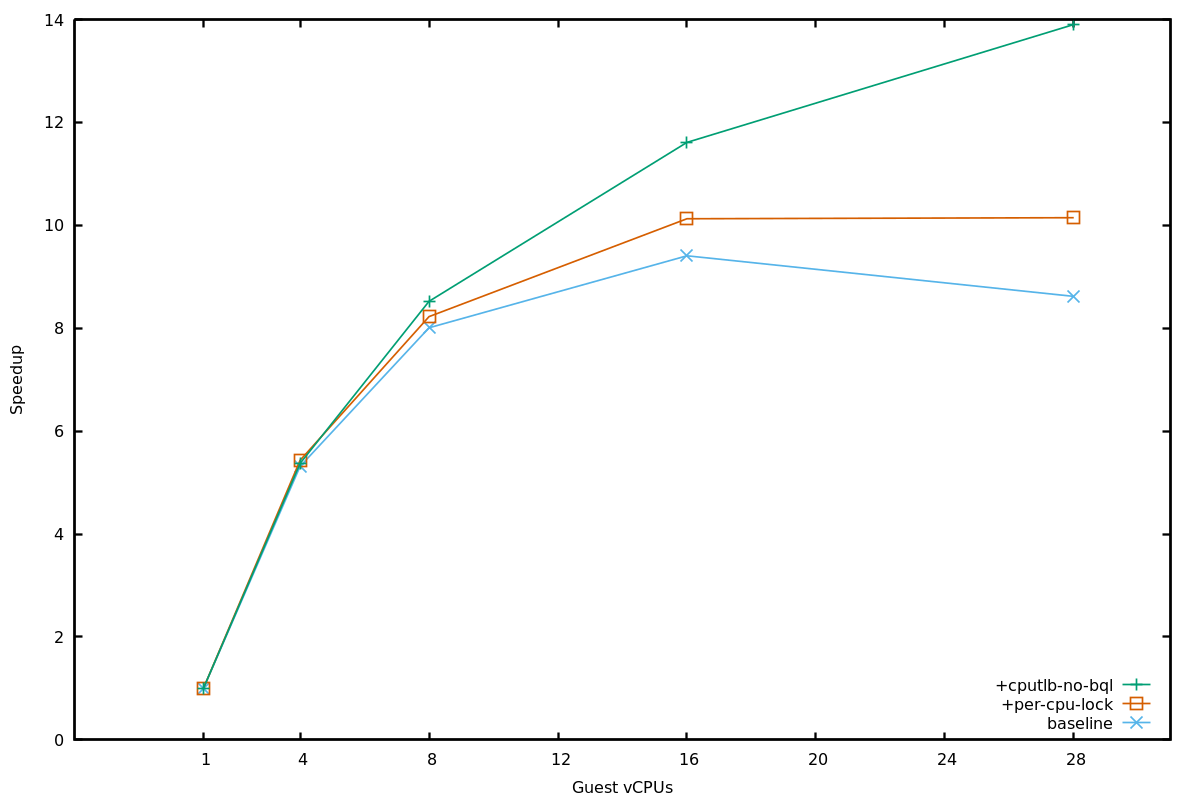
x86-on-ppc64, make -j N inside a VM
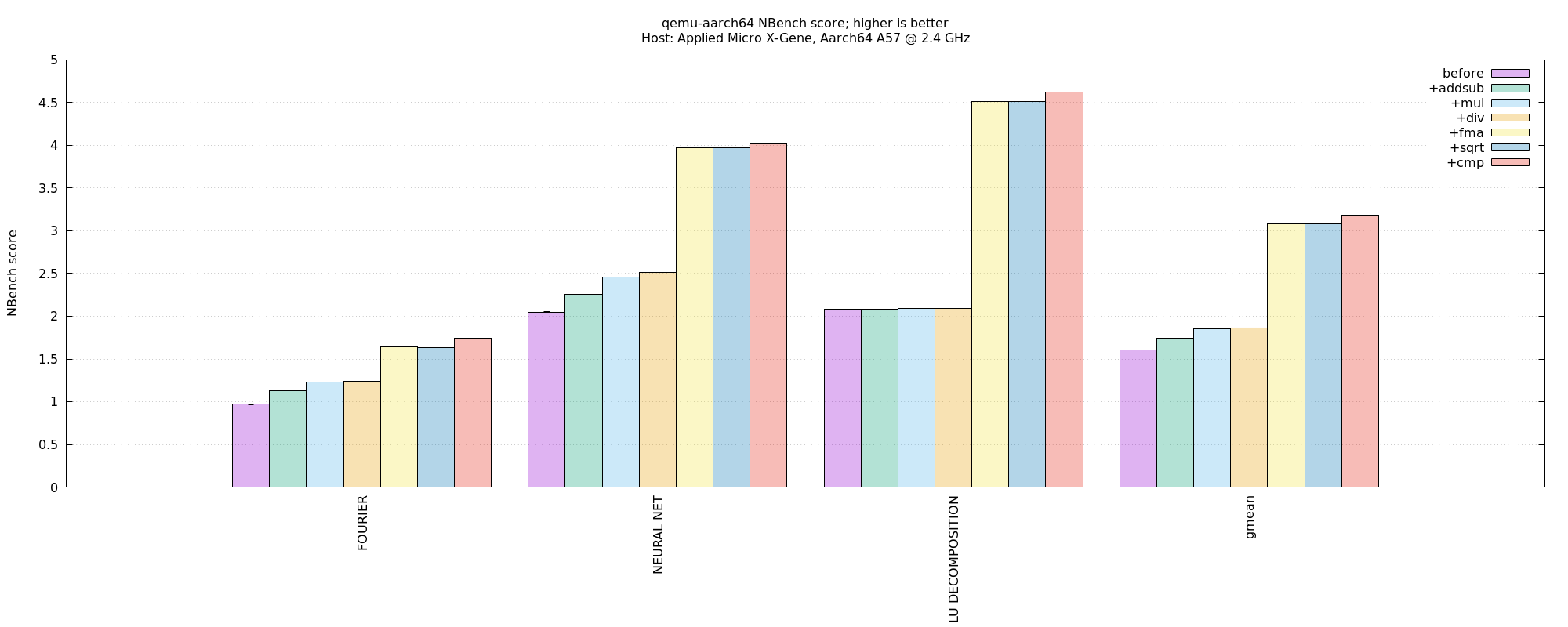
aarch64-on-aarch64, Nbench FP
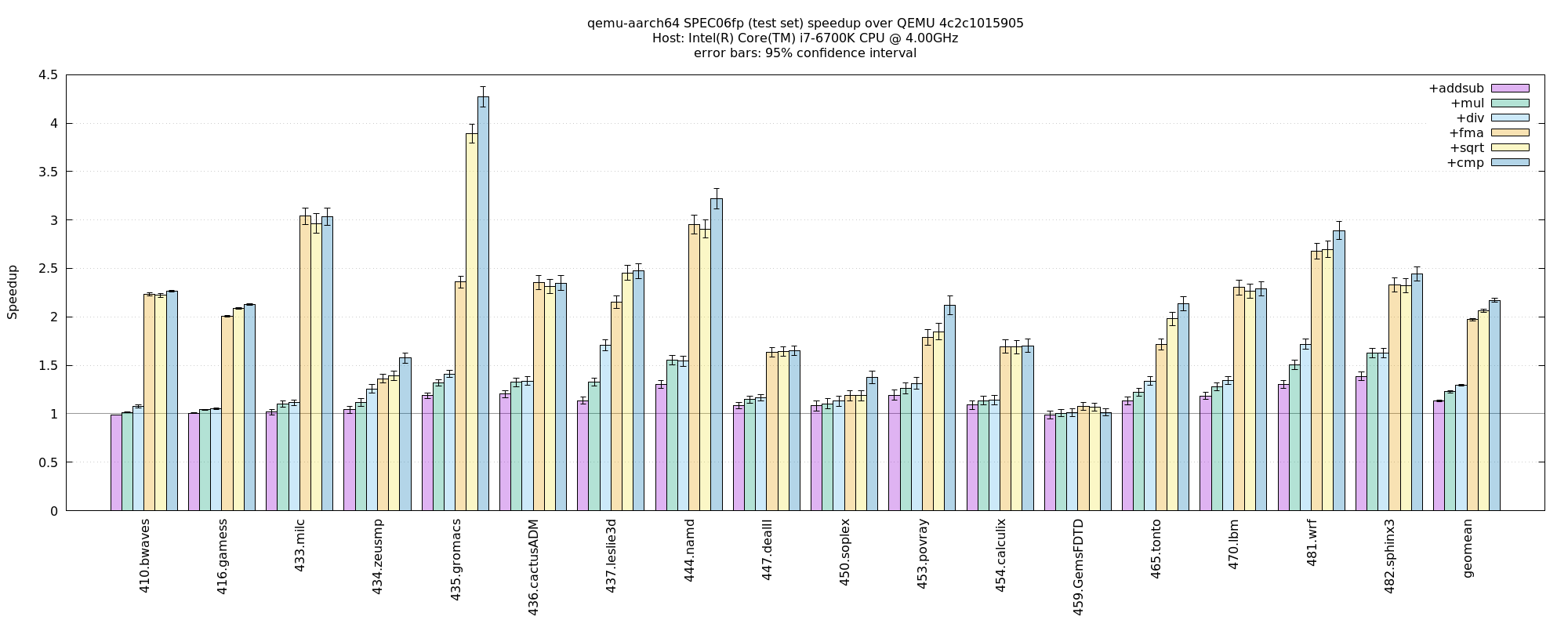
aarch64-on-x86, SPEC06fp
cross-ISA examples (2)
ind. branches, aarch64-on-x86
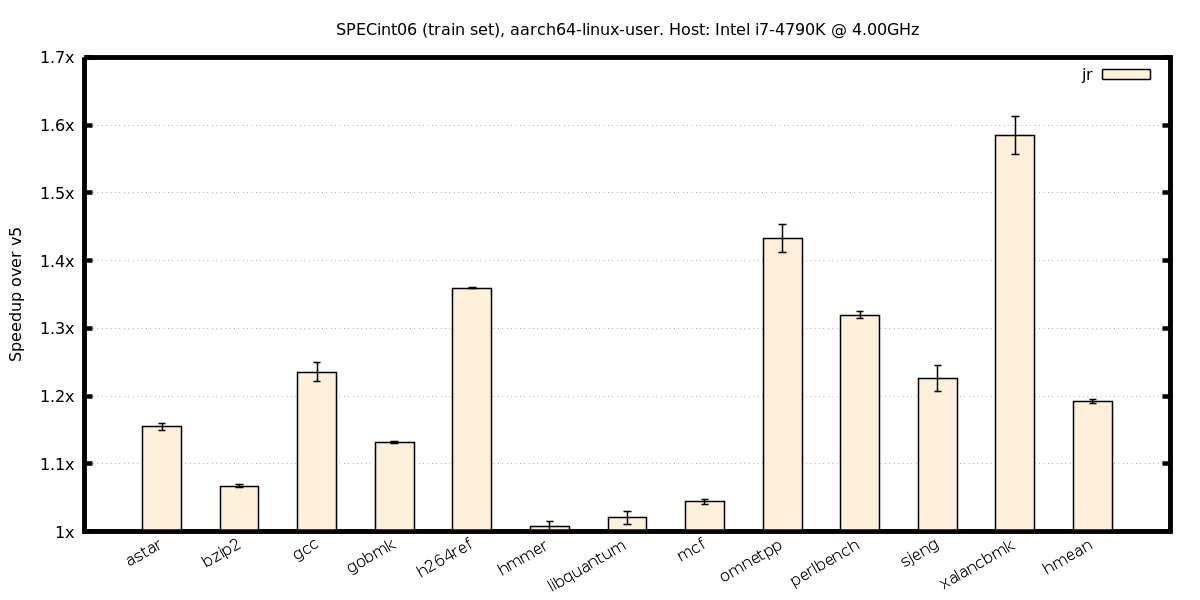
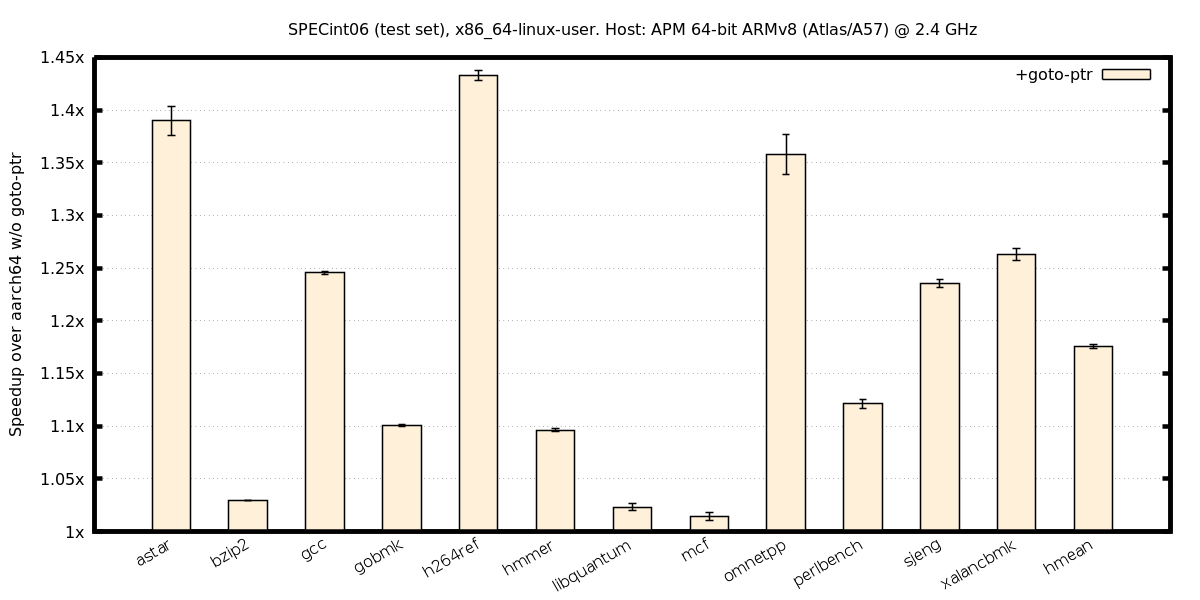
ind. branches, x86-on-aarch64
bench before after1 after2 after3 final speedup
---------------------------------------------------------
aes 1.12s 1.12s 1.10s 1.00s 1.12
bigint 0.78s 0.78s 0.78s 0.78s 1
dhrystone 0.96s 0.97s 0.49s 0.49s 1.9591837
miniz 1.94s 1.94s 1.88s 1.86s 1.0430108
norx 0.51s 0.51s 0.49s 0.48s 1.0625
primes 0.85s 0.85s 0.84s 0.84s 1.0119048
qsort 4.87s 4.88s 1.86s 1.86s 2.6182796
sha512 0.76s 0.77s 0.64s 0.64s 1.1875
bench before after1 after2 after3 final speedup
---------------------------------------------------------
aes 2.68s 2.54s 2.60s 2.34s 1.1452991
bigint 1.61s 1.56s 1.55s 1.64s 0.98170732
dhrystone 1.78s 1.67s 1.25s 1.24s 1.4354839
miniz 3.53s 3.35s 3.28s 3.35s 1.0537313
norx 1.13s 1.09s 1.07s 1.06s 1.0660377
primes 15.37s 15.41s 15.20s 15.37s 1
qsort 7.20s 6.71s 3.85s 3.96s 1.8181818
sha512 1.07s 1.04s 0.90s 0.90s 1.1888889
Ind. branches, RISC-V on x86, user-mode
Ind. branches, RISC-V on x86, full-system
Applications

- Seven high-throughput applications from the PERFECT Benchmark Suite[*]
- Used High-Level Synthesis for productivity
[*] http://hpc.pnl.gov/PERFECT/
Additional latency for hits to blocks stored in accelerators
- core0's L1 misses on a read from 0xf00, mapped to the L2's logical bank1
- L2 bank1's tag array tracks block 0xf00 at acc2; sends request to acc2
- acc2 returns the block to bank1
- bank1 sends the block to core0
High-Level Operation
Return via the host bank guarantees the host bank is the only coherence synchronization point
- No changes to coherence protocol needed
ROCA Host Bank
-
Enlarged tag array for accelerator blocks
- Ensures modifications to accelerators are simple
- Leverages Selective Cache Ways [*] to adapt to accelerators' intermittent availability
- Dirty blocks are flushed to DRAM upon accelerator reclamation
[*] David H. Albonesi, "Selective Cache Ways: On-Demand Cache Resource Allocation", ISCA'99
4-way example: 2 local, 2 remote ways
Logical Bank Way Allocation
- Increasing associativity helps minimize waste due to uneven memory sizing across accelerators (Ex. 2 & 3)
- Power-of-two number of sets not required (Ex. 4), but
- complicates set assignment logic [*]
-
requires full-length tags: modulo is not bit selection anymore
[*] André Seznec, "Bank-interleaved cache or memory indexing does not require Euclidean division", IWDDD'15
Coalescing PLMs
- PLM manager exports same-size dual-ported SRAM banks as multi-ported memories using MUXes
- ROCA requires an additional NoC-flit-wide port, e.g. 128b
==
Coalescing PLMs
- SRAMs are accessed in parallel to match the NoC flit bandwidth
- Bank offsets can be computed cheaply with a LUT + simple logic
- Discarding small banks and SRAM bits a useful option
ROCA: Area Overhead
- Host bank's enlarged tag array
-
5-10% of the area of the data it tags (2b+tag per block)
-
5-10% of the area of the data it tags (2b+tag per block)
- Tag storage for standalone directory if it wasn't there already
- Inclusive LLC would require prohibitive numbers of recalls
- Typical overhead: 2.5% of LLC area when LLC = 8x priv
-
Additional logic: way selection, PLM coalescing logic
- Negligible compared to tag-related storage
-
Sensitivity studies sweeping accelerator activity over
- space (which accelerators are reclaimed)
- time (how frequently they are reclaimed)
-
Key result: Accelerators with idle windows >10ms are prime candidates for ROCA
- perf/eff. within 10/20% of that with 0% activity